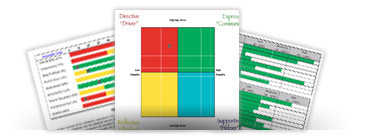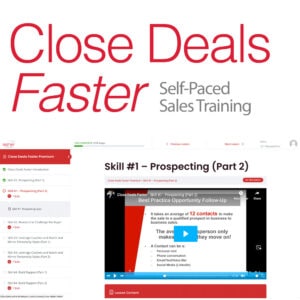Practice Your “Closing Sales” Techniques BEFORE You Need Them

Closing sales techniques are the key to sales. Similar to plays in sports, they should be practiced over and over in order to build competence and become second nature.
Some tips for getting this done follow.
Role play
You cannot build competence solely by reading the closes online or in books and memorizing. You have to build a muscle memory of sorts by vocalizing them. If you are by yourself, it pays to practice in front of a mirror even during your commute. When you do this, you can also practice your body language and gestures so your delivery hits the right notes.
Even more effective is to role play with fellow salespeople or coaches who pretend to be buyers. This can be done during regular sales meetings or special training sessions. The advantage is that very realistic scenarios can be developed and kinks in delivering closing sales techniques can be worked out before meeting with live buyers.
What to practice
Any part of a sales call can be practiced, from establishing rapport to guided questions, the most fruitful things to work on are objection handlers and closes.
While there is an infinite amount of circumstances, most objections boil down to a few repeating themes:
- Price
- Lack of need/buy-in
- Unproven product or company
- Timing
- Using a competitor already
Aim to master four or five go-to handlers/closing sales techniques to cover the most commonly encountered objections for your industry and region.
When to close
Another crucial thing to practice is the RIGHT TIME to close. Closing prematurely and too late are both deal-killers.
Here are some cues that a coach should simulate, all of which indicate the “buyer’s shift”:
- Risk mitigation question: This means the buyer is seriously considering buying, but is cautious. “What’s your warranty like?”
- Knocking the competition
- Personal questions about you (they want to be comfortable with buying from you)
- Head tilts to one side
- Raises both eyebrows
- Rubs hands together
- Leans forward
- An active, friendly facial expression
- Chin stroke
- Eye contact
- Relaxed, palm opened hands
- Uncrossed arms
- Uncrossed legs (or if they’re crossed, they are crossed towards you)
- Body is angled towards you and is upright in posture
And these are signs the buyer is NOT ready to be closed:
- Eye rubbing
- Pursed lips
- Facial scratching
- Avoiding eye contact
- Hands in pocket
- Pen tapping
- Shoulders are tense with crossed arms
- Tapping legs
- Body is slouched or leaning away from you
First, practice simply recognizing each clue and identifying whether it is a positive or negative sign. Then, practice recognizing the shift AND delivering a close smoothly.
Devote time to learning your closes. The salespeople who can close are the most valuable members of a sales team. Those who cannot, even though they may be wonderful people and nice to prospects, don’t last long. The differentiator, besides natural aptitude, is practice. Don’t skimp on it!
For more tips on closing sales techniques follow this blog and consider attending one of our local sales training workshops near you.



